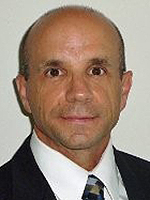Senior Reporter
Plaintiff Attorneys Often Use 'Reptile Theory' to Win Nuclear Trucking Jury Verdicts, Experts Say

[Stay on top of transportation news: Get TTNews in your inbox.]
In 2009, two prominent trial attorneys introduced a litigation tactic known as the “reptile theory,” a strategy that aims to stoke fear and anger in the minds of jurors and, ultimately, compel them to hand down massive verdicts in civil lawsuits. In trucking accident lawsuits, it’s a method plaintiff lawyers have deployed in pursuit of so-called “nuclear” jury verdicts, those resulting in judgments of $10 million or more against motor carriers.
“The reptile theory is a tactic developed by plaintiffs to take the focus away from the accident itself — and the actual damages that were incurred by plaintiffs and what they suffered — and then turn it around to increase the jury award,” said Douglas Marcello, a trucking defense attorney at the law firm of Marcello and Kivisto, based in Carlisle, Pa. “How do they do that? By presenting the jury with the notion that the jurors are the defenders and protectors of the community, and the only way they can do that is by large verdicts.”
In trucking accident lawsuits, plaintiff attorneys use the tactic to turn attention away from the incident, and focus instead on a carrier’s safety practices and policies — even when the carrier is in compliance with federal regulations. That tactic, attorneys and litigation experts said, can often result in a much larger jury verdict.

Guillot
In fact, it has already created what Triple G Express President Randy Guillot described as a “growing highway litigation crisis for the trucking industry.”
“Insurance rates are spiraling out of control, said Guillot, who also is the most recent former chairman of American Trucking Associations. “Self-insurance costs are on the rise. Carriers are going out of business because they can’t afford insurance.”
To help trucking companies stem this tide, experts are compiling data both scientific and practical to help carriers understand how to mitigate the reptile effect, and what missteps to avoid in court.
A five-session, in-depth overview of this information was presented during American Trucking Associations’ Safety, Security and Human Resources 2020 National Conference last month. The virtual event featured presentations and comments from experts who offered suggestions on issues ranging from witness preparation to how to prevent juries from being swayed by the reptile tactics.
Great video from Keep Texas Trucking on #lawsuitabuse and its impact on our supply chain. https://t.co/m8jOjoID19 — American Trucking (@TRUCKINGdotORG) December 9, 2020
In the opening session, Marcello was on hand and offered truckers a warning about the motives of plaintiff attorneys who are chasing multimillion-dollar judgments for their clients.
“There are those out there who don’t see us as being the lifeblood of America that brings us the supplies that people need in their everyday lives,” he said. “They look at us as a profit center. They live by the mantra of ‘hit a truck, get a check.’ They look at us as being 18-wheel ATM machines.”
“In trucking cases, the reptile strategy is almost a given,” added Rachel York Colangelo, national managing director of jury consulting for Magna Legal Services. “And it’s been very effective with jurors.”
She added, “There are buzzwords that will be coming in cases that will always be a red flag — words like ‘safety,’ ‘training,’ ‘community,’ ‘accountability.’ They let you know that the plaintiff attorney is headed down the reptile road.”
On that road, they’ll typically examine not just the accident, but also a carrier’s safety profiles and procedures, ranging from driver hiring, training and supervision to truck maintenance and use of motor carrier data.
Juries are very skeptical of corporations and their representatives. They’re going to be thinking, ‘Sure Mr. CEO, you’re going to say whatever you need to protect your company.’
Rachel York Colangelo, national managing director of jury consulting for Magna Legal Services
Accidents that involve hours-of-service requirements, drug or alcohol use, bad driver histories or health issues virtually guarantee a verdict in favor of the plaintiff, according to Rebecca Brewster, president of the American Transportation Research Institute. Last year, an ATRI study of 600 truck accident lawsuits confirmed a sharp rise in nuclear verdicts.
In addition to those listed above, ATRI found that driver fatigue, cellphone use, rear-end collisions and crashes in construction zones also are common issues in nuclear verdict cases.
To protect themselves, carriers should always strive to maintain solid FMCSA safety scores, adopt tough driver hiring standards, and establish and uphold excellent safety practices, said Nick Saeger, an assistant vice president with Sentry Insurance.
Mark Schedler, senior editor at J.J. Keller & Associates Inc., added that plaintiff attorneys will look at a carrier’s truck driver data, including accidents and incidents, violations and convictions, roadside inspections, motorists and customer complaints, electronic logging devices, and telematics data and video.

Schedler
“It’s really crucial that the safety leader knows the universe of data generated by the telematics, the dash cam and ELDs,” Schedler said. “Once that’s established, then the safety manager can look at the ones that are most associated with accident-causing behavior.”
A mainstay of the reptile theory involves plaintiff attorneys following a widely circulated script, shared among members of the plaintiff’s bar, that is used in questioning defense witnesses. Bill Kanasky, senior vice president of litigation psychology for Courtroom Sciences Inc., calls this course of questioning the “reptile attack.”
Plaintiff attorneys set up a witness with a series of general questions — for example, getting them to agree to what makes a carrier safe — then trapping them with lawsuit-specific questions, asking why they failed to live up to individual or company safety standards mentioned in their testimony.
This plays into the overarching goal of the reptile tactic — to jack up jury verdicts by causing jurors to perceive the defendants’ alleged bad conduct as a threat to their own personal safety.
Indeed, surveys and mock trials indicate that the reptile strategy is effective in explaining juries’ reasoning for large damage awards.

Home | Video | Heroes' Photo Gallery
Saluting the men and women of the trucking industry who kept America's essential goods flowing during the coronavirus pandemic.
Heroes: Peter Lacoste | Susan Dawson | James Rogers | Reggie Barrows | Kevin Cooper | Cesar Quintana Moreno
“Getting to the heart of the nuclear verdict involves an understanding of the reptile theory,” Colangelo said. Her research in mock trials and surveys — which has measured the pulse and current attitudes of juries — provides insight into juror psychology and predispositions.
“Overall, what we’re seeing is about 76% of juries around the country believe that corporate executives will lie and cover up,” Colangelo said. “Juries are very skeptical of corporations and their representatives. They’re going to be thinking, ‘Sure Mr. CEO, you’re going to say whatever you need to protect your company.’ So there’s a big hurdle for those representatives to get over in credibility.”
Magna’s nationwide surveys found that 30% of juries believe it takes billions of dollars to send a message to large corporations that they perceive exhibit bad or risky behavior.
“They believe they need to award large verdicts to get the attention of a company,” Colangelo said.
In addition, 71% of jurors surveyed don’t believe there should be caps on jury awards, and 45% said they would ignore judges’ jury instructions if they “don’t think the law is appropriate.”

Marcello
Marcello said carriers should determine weeks ahead of a trial who will be a key witness, and be sure they are well briefed on how to testify, what to say and how to say it. Typically the top two defendants testifying should be the driver and one of the company’s safety officials.
“Ask them the type of questions the plaintiff attorney might ask them,” he said. “But always tell the truth. I can always address a bad truth, but I can’t address a good lie.”
Marcello, the defense attorney, said they should be advised on how to sit, how to act and their demeanor on the stand. “This isn’t ... what you see on TV,” he said. “This is to have a conversation. Listen to the question, think of the short answer in your mind. Give that answer. Stop. Next question.”
Litigation expert Kanasky said the No. 1 variable on the witness stand is emotion. Witnesses who become defensive, argumentative and evasive are a turnoff to a jury, he said, but noted that a witness who will say or agree to anything just to get out of the hot seat is also dicey.

Tyson
“Sympathy still works, but for the last 10 to 15 years, the focus has been on getting the jury angered,” said Robert Tyson, founding partner of the law firm of Tyson and Mendes, headquartered in San Diego. “Anger is the No. 1 factor for any runaway jury verdict.”
Tyson added, “The challenge will be in defending what happens before the accident [more] than the accident itself. That’s what is going to get a jury angry.”
Tyson, who has practiced law for years, wrote “Nuclear Verdicts: Defending Justice for All,” a book on how defense attorneys can limit exposure at trial.
“If you couple sympathy for the plaintiff with anger, that’s really the worst case scenario,” said Kellie Janke, a litigation consultant with Magna.
Comments from a recent mock jury trial with fatalities wrought an array of visceral comments.
“I think they should have total punitive damages,” one juror said, referencing the trucking company defendant in the mock trial. “I would hope that they would rethink the way they do business, which is questionable. But paying out all this money may make them think a little differently about the way they do things.”
Another juror said, “I think that companies don’t spend the resources to train their employees, and then people die. This is a classic court case of that, I think.”
Colangelo said such comments have been very common in surveys over the last several years “as reptile mania has swept the litigation landscape.”
She added, “We hear this from jurors in almost every type of case, in almost every venue across the country.”
Colangelo said defense attorneys should alert potential jurors during the selection process that while plaintiff attorneys will lob allegations that the defense represents a corporation whose conduct will be called into question, it’s the jurors’ responsibility to fairly judge the company. Jurors also must clearly understand their duty to potentially compensate the plaintiff, but not punish the defendant. Plaintiff attorneys often will appeal to emotion, for example, by bringing to the witness stand the brother of a person killed in a crash, she said.

Brewster
Brewster said that humanizing truck drivers and motor carriers can go a long way in mitigating anger among jurors.
“We need to do a better job of doing that on the defense side,” Colangelo added. “Things like saying, ‘This truck driver has been a little league coach for 30 years in your community. Everybody knows him.’ ”
She added, “We also can tell the company’s story and highlight some of the great things the company does for the community.”
Want more news? Listen to today's daily briefing:
Subscribe: Apple Podcasts | Spotify | Amazon Alexa | Google Assistant | More





